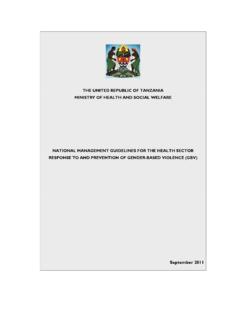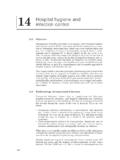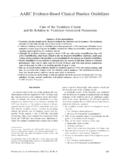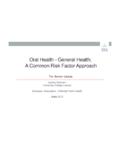Transcription of Policy Implementation Barriers Analysis: Conceptual ...
1 Policy Implementation Barriers . analysis : Conceptual . framework AND PILOT TEST IN. THREE countries . OCTOBER 2009. This publication was produced for review by the Agency for International Development (USAID). It was prepared by Kai Spratt, formerly of the Health Policy Initiative, Task Order I. Suggested citation: Spratt, Kai. 2009. Policy Implementation Barriers analysis : Conceptual framework and Pilot Test in Three countries . Washington, DC: Futures Group, Health Policy Initiative, Task Order 1. The USAID | Health Policy Initiative, Task Order 1, is funded by the Agency for International Development under Contract No. GPO-I-01-05-00040-00, beginning September 30, 2005.
2 The project's HIV activities are supported by the President's Emergency Plan for AIDS Relief (PEPFAR). Task Order 1 is implemented by Futures Group, in collaboration with the Centre for Development and Population Activities (CEDPA), White Ribbon Alliance for Safe Motherhood (WRA), and Futures Institute. Policy Implementation Barriers . analysis : Conceptual . framework AND PILOT TEST IN. THREE countries . OCTOBER 2009. The views expressed in this publication do not necessarily reflect the views of the Agency for International Development or the Government. TABLE OF CONTENTS. Acknowledgments ..iv Executive Summary .. v Abbreviations.
3 Vi I. Introduction .. 1. Policy Implementation framework .. 2. Activity 4. Research Methodology .. 5. II. Country Reports .. 10. China: analysis of Barriers to Providing ART to Injecting Drug Users .. 10. Indonesia: analysis of Barriers to Implementation of 100% Condom Use Policy .. 17. Vietnam: Assessing Implementation Barriers to Decision 65 Community-level Reintegration of 23. III. Lessons Learned .. 32. Policy Implementation Barriers analysis 32. Policy Implementation Barriers analysis 34. Moving 36. 37. iii ACKNOWLEDGMENTS. The USAID | Health Policy Initiative, Task Order 1 thanks the USAID Missions in China, Indonesia, and Vietnam for their valuable support in selecting a topic for analysis and conducting stakeholder interviews at various levels.
4 The project also thanks those interviewed for their interest and time, without which this activity would not have been possible. Finally, the following individuals played important roles in conducting this activity: Health Policy Initiative/Washington Harry Cross Britt Herstad Anne Eckman Deborah Rubin (Health Policy Initiative partner, Cultural Practice). Deborah Caro (Health Policy Initiative partner, Cultural Practice). Mary Kincaid Nadia Carvalho Vietnam Team David Stephens Nandita Kapadia-Kundu Huong Tran Tran Ha Nam Nguyen Thu Nguyen Tran Lam Dr. Tran Tien Duc Indonesia Team Claudia Surjadjaja Andith Wisnu Yustina Rostiawati and colleagues at Atma Jaya Catholic University China Team Dr.
5 Hu Bin Ms. Shicun Cui Mr. Liang Jiaxiong iv EXECUTIVE SUMMARY. In recent decades, the world has been severely affected by the AIDS pandemic. In bringing attention to the pandemic, international agencies, AIDS activists, and national health experts have helped spur national governments to respond by creating and approving policies and programs intended to address HIV/AIDS-related challenges. However, not all of these policies or program directives are being implemented at the country level. Recognizing this, the United States Office of the Global AIDS. Coordinator (OGAC) has acknowledged the importance of identifying and addressing Policy Barriers related to Implementation .
6 In the HIV/AIDS FY2008 President's Emergency Plan for AIDS Relief (PEPFAR) Country Operating Plan Guidance, specific instructions are included for the first time for operating units to describe Policy Barriers they need to overcome to ensure a program area's success. The USAID | Health Policy Initiative, Task Order 1 is well-positioned to examine such Policy Barriers , as the project's mandate includes contributing to a better understanding of fundamental Barriers to Policy Implementation by developing systematic approaches to assess and reduce the Barriers . This paper describes the project's effort to develop such an approach through conducting a Policy Implementation Barriers analysis .
7 In this pilot phase, the Health Policy Initiative focused on three Asian countries (China, Indonesia, and Vietnam) representing a range of political systems in which the HIV epidemic has become prominent in particular populations. The experience in Asia has yielded many country-specific lessons and insights on Policy development and Implementation (as described in this document), as well as a validation of several global lessons that can be applied more broadly. These lessons include the following: Conflicting/intersecting policies. National policies include broad and general language and are not always supported by operational or local policies and guidelines.
8 In addition, traditional health programs are often vertical ( , they do not coordinate with other relevant programs such as HIV, tuberculosis, reproductive health, maternal and child health, and immunization) and have unresolved Policy conflicts or inconsistencies that can be resolved fairly easily once identified. Low motivation and commitment. Personal, organizational, or institutional motivation and commitment can facilitate the Policy Implementation process. Numerous factors can result in low motivation or commitment, such as different priorities, a lack of incentives, and limited resources. Implementation at multiple levels.
9 The roll out of any Policy often meets some level of community resistance or low engagement that thwarts effective Implementation . The early engagement of all stakeholders is essential to resolving this kind of barrier. Barriers analysis serves to engage stakeholders and increase commitment and understanding of their roles during Implementation , in addition to informing effective Implementation . Stigma, discrimination, and gender. These issues often are not considered in Policy development, and yet they contribute significantly to the success/failure of Policy Implementation . Policy formulation versus Implementation . There are key differences between Policy formulation and Implementation that must be addressed to maximize the impact of a new Policy .
10 To respond to these lessons, a final stakeholder assessment process can best generate specific recommendations. This process should focus on harnessing local expertise to identify the best solutions to findings from the Policy Implementation Barriers analysis . The Health Policy Initiative was able to pilot test this assessment process in Vietnam, where the research team and other stakeholders successfully produced specific recommendations for action. These recommendations include a targeted approach to strengthen and focus on weak areas of national programs, such as information systems; planning processes; and suggested educational campaigns about specific legislation.








